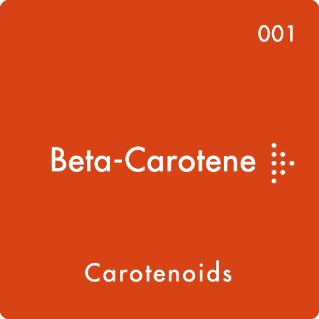
Health functions
Beta-carotene is the main safe dietary source of vitamin A, essential for normal growth and development, immune system function, and vision. Read More

Beta-carotene is an antenna pigment found in plants, algea and photosynthetic bacteria. It gives yellow and orange fruits and vegetables their rich hue. The name beta-carotene is derived from the Latin name for ‘carrot’ (carotus sativus).
Among the carotenoids that can be converted to vitamin A in the human body, so-called ‘provitamin A carotenoids’, beta-carotene is the most abundant and most efficient one found in foods.
Currently available evidence suggests that in addition to being a source of vitamin A, beta-carotene plays many important biological roles that may be independent of its provitamin A function. The best-known activity is the antioxidant function, that is important in order to inactivate reactive oxygen species and singlet oxygen in peripheral tissues, in plasma and in skin.
Authored by Dr Peter Engel in 2010, reviewed and revised by Dr. Adrian Wyss on 13.10.17.
Things to know about Beta-carotene
The recommended dietary allowance (RDA) of beta-carotene is dependent on age, gender, and other factors. Read More
The amount of beta-carotene intake varies widely and is not normally distributed in the population. The majority of people in developed countries consume in the range of 1–2 mg per day, which is below the recommended intake. Read More
A major clinical trial, the Age Related Eye Disease Study (AREDS1), found that patients with age-related macular degeneration could slow its progression by taking beta-carotene (15 mg), vitamin C (500 mg), vitamin E (400 mg), zinc (80 mg), and copper (2 mg) (37). Read More
Beta-Carotene (vitamin A) deficiency has been associated with night blindness, dry skin, decreased resistance to infections, and other symptoms. Read More